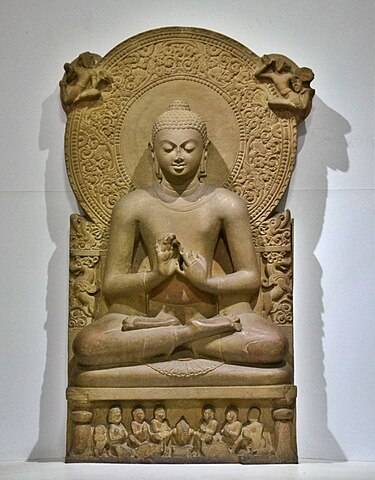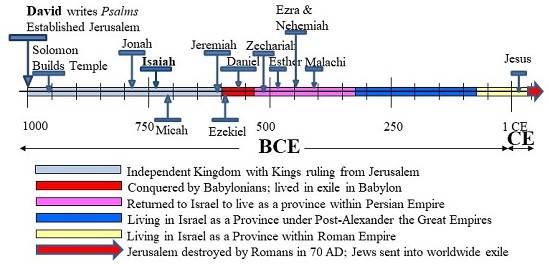
พระมหาเทวประภาส, CC BY-SA 3.0, via Wikimedia Commons
Buddha Gautama and Jesus Christ are often compared as founders of two world religions. They are also similar in another important respect – one which gives rise to some misunderstanding.
Many people assume that the term ‘Buddha’ forms part of the name for Gautama Buddha. In reality his name was Siddharta Gautama. The term ‘Buddha’ associated with him is a title meaning ‘The Awakened One’. It likens his enlightenment as to one waking from sleep. Likewise ‘Christ’ is not the last name of Jesus (his mother and father did not have the names Joseph and Mary Christ). Rather, ‘Christ’ is a title meaning ‘The Anointed One’. Thus, not only are these two men founders of two world religions, but they both bear meaningful titles so closely associated with them that many think these are their names.
But in the taking on of these titles we see an important distinction between Jesus of Nazareth and Siddharta Gautama. Siddharta Gautama received his title from his Sangha (community of followers) centuries after he lived. When his Sangha fully realized his tremendous accomplishment in achieving enlightenment, they entitled him ‘Buddha’.
However, the title ‘Christ’ was not created by Jesus’ followers, nor did they give it to him. So where does ‘Christ’ come from? Who made up the title and gave it to him? We find answers to these questions in the book of Psalms of the Bible written 1000 years before Jesus lived. The story of the ‘Christ’ is an epic one which spans human history. We build on the information explained here about Greek and Hebrew translations of the Bible. You should familiarize yourself with this first.
The Origin of ‘Christ’
In the figure below we follow the translation process as explained in that article. But now we specifically focus on the word ‘Christ’:

In the original Hebrew of the Psalms (in Quadrant #1) the title for Christ was ‘mashiyach’. The Hebrew dictionary defines ‘mashiyach’ as an ‘anointed or consecrated’ person. Passages of the Psalms prophesied of a specific coming mashiyach (with a definite article ’the’). In the 250 BCE Septuagint translation, the scholars used a Greek word for the Hebrew mashiyach having a similar meaning. Χριστός = Christos. This came from chrio, which meant to rub ceremonially with oil.
Therefore the word Christos was translated by meaning (and not transliterated by sound) from the Hebrew ‘mashiyach’ into the Greek Septuagint to prophesy about this coming person. This is Quadrant #2. The New Testament writers understood that Jesus was this very person prophesied in the Septuagint. So they continued to use the term Christos in the Greek New Testament (again in Quadrant #2).
Christ in Modern Bibles

Our Lady of Saidnaya Monastery, Public domain, via Wikimedia Commons
But for modern-day languages ‘Christos’ was then transliterated from the Greek into English (and other modern languages) as ‘Christ’. This is the lower half of the figure labelled #3. Thus the modern ‘Christ’ is a very specific title from the Old Testament. It derives by translation from Hebrew to Greek, and then transliteration from Greek to modern languages. Scholars translate the Hebrew Old Testament directly to modern languages without using Greek as an intermediate language. They have used different words in translating the original Hebrew ‘mashiyach’. Some transliterated the Hebrew ‘mashiyach’ to the word Messiah by sound. Others translated ‘mashiyach’ by its meaning and so have ‘Anointed One’ in these specific passages. In either case we do not often see the word ‘Christ’ in modern Old Testaments. Therefore this connection to the Old Testament is not apparent. But from this analysis we know that in the Bible:
‘Christ’=’Messiah’=’Anointed One’
All of these have identical meanings and refer to the same original title. This is similar to how 4 = ‘four’ (English) = ‘quatre’ (French) = 6-2 = 2+2. These are all math and language equivalents of ‘4’.
Anointing was the process that a king designate went through in order to become king. This is similar to how getting elected is the process by which a Prime Minister or President gains the right to rule today. We might say the Prime Minister is the ‘elected one’ in the same way we would say the king is the ‘anointed one’. So the ‘Anointed One’, or ‘Messiah’, or ‘Christ’ designated a King, someone who would rule.
The Christ anticipated in 1st Century
With this knowledge, let’s make some observations from the Gospel. Below is the reaction of King Herod when the wise men from the East came looking for the king of the Jews. This forms part of the story of the birth of Jesus. You will see ‘Messiah’ or ‘Christ’ used here, depending on the translation. Notice, ‘the’ precedes Messiah or Christ, even though it is not referring specifically about Jesus:
3 When King Herod heard this, he was greatly troubled, and all Jerusalem with him. 4 Assembling all the chief priests and the scribes of the people, he inquired of them where the Messiah was to be born.
Matthew 2:3-4
You can see that the very idea of ‘the Christ’ (or ‘the Messiah’) was already commonly accepted between Herod and his religious advisors, even before Jesus’ birth. They use the title without referring specifically to Jesus. This is because, as explained above, ‘Christ’ comes from the Old Testament Psalms written hundreds of years earlier by King David. This was commonly read by Jews of the 1st century (like Herod) in the Greek Septuagint. The title existed hundreds of years before there were any Christians.
King Herod became ‘greatly troubled’ because he felt threatened by this Christ, which he understood to be a rival King. So we see in King Herod’s reaction both the meaning of Christ (a King) and its ancient roots, originating long beforehand.
Prophecies of ‘The Christ’ in Psalms

Let’s look at these first occurrences of the prophetic title ‘Christ’ in the Psalms. King David composed them about 1000 BCE – far, far before the birth of Jesus:
The kings of the earth take their stand … against the LORD and against his Anointed One … The One enthroned in heaven laughs; the Lord scoffs at them… saying, “I have installed my King on Zion, my holy hill….”.
Psalm 2:2-4
Psalm 2 would read like the following in the Greek Septuagint (I am putting it with a transliterated Christos so you can ‘see’ the Christ title like a reader of the Septuagint could):
The kings of the earth take their stand … against the LORD and against his Christ … The One enthroned in heaven laughs; the Lord scoffs at them… saying, “I have installed my King on Zion, my holy hill …
Psalm 2:2-4
You can now ‘see’ Christ in this passage like a reader of the 1st century would have.
Christ in Psalm 132
But the Psalms continue with more references to this coming ‘Christ’. I put the standard passage side-by-side with a transliterated one with ‘Christ’ so you can see it:
| Psalm 132- From Hebrew | Psalm 132 – From Septuagint |
| O Lord, …10 For the sake of David your servant, do not reject your anointed one.11 The Lord swore an oath to David, a sure oath that he will not revoke: “One of your own descendants I will place on your throne— …17 “Here I will make a horn grow for David and set up a lamp for my anointed one. ” | O Lord, …10 For the sake of David your servant, do not reject your Christ.11 The Lord swore an oath to David, a sure oath that he will not revoke: “One of your own descendants I will place on your throne— …17 “Here I will make a horn grow for David and set up a lamp for my Christ. ” |
You can see that Psalm 132 specifically speaks in the future tense (“…I will make a horn for David…”). This is important to remember when assessing the prophecies. Herod was aware that the Old Testament prophets made predictions about the coming ‘Christ’. This explains why he was ready for this announcement. He just needed his advisers to direct him to the specific prophesy foretelling the location of the Christ’s birth.
The lock-and-key system gets more precise
We used the image of a key fitting into a lock to introduce the Old Testament prophecies and Jesus’ fulfillment of them. The Old Testament writers made a series of very specific predictions. They looked hundreds of years into the future to verify that this was really the Creator God’s Plan. No human has this ability to foresee so far into the future, so therefore we know that this plan is not of human origin.
Now we see that this Plan centered on the title ‘Christ’ put forward hundreds of years before Jesus lived. Psalm 132 specified that the ‘Christ’ had to be a descendant of King David, the founder of the royal dynasty. In this regard Jesus and Siddhartha are similar in that they both come from a royal line. Siddhartha was born a son of a wealthy king and was raised as a prince. It was only when he reached the age of 29 that he renounced his claim to the throne. Thereafter he took the life of a wandering ascetic.
But the account of Jesus‘ birth sees him born in a stable because his parents were so poor. Yet they were still from David’s royal family. How Jesus could be born into such a poor family, yet still be of royal blood? We understand this from another prophecy explaining what would happen to this royal family before the ‘Christ’ would come. We look at this next prophecy next.